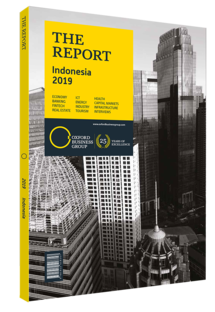New regulations boost financial inclusion in Indonesia
Financial inclusion is a key priority for Indonesia’s government. The country has made significant strides in expanding access to its unbanked population. According to the World Bank, the banked population has increased from 20% in 2011 to 49% in 2017. These improvements are the result of priorities that the state has set, with specific regard to the establishment of the National Council of Financial Inclusion. The council was set up in 2016 under Presidential Regulation No. 82 as part of the National Strategy for Financial Inclusion (NSFI). With President Joko Widodo at the head of the council, it aims to increase the Inclusive Financial Index from its 2014 level of 36% to 75% by 2019. Working alongside the council, the government has undertaken several measures to improve financial inclusion, including:
• The issuance of regulations to implement the NSFI, e.g., Presidential Regulation No. 82;
• The establishment of financial inclusion programmes, e.g., Laku Pandai and Kredit Usaha Rakyat;
• Strengthening the financial ecosystem, such as the Palapa Ring and the National Payment Gateway; and
• The acceleration of market access for farmers, fisherman and entrepreneurs through digital application, e.g., Tanam is managed by the Agriculture Research and Development Agency.
Online Lending
Between 2014 and 2018 there were several investment activities surrounding Indonesia’s online lending players, including those who are working both directly and indirectly around lending, with the majority being classified as peer-to-peer (P2P) lending players. These investment activities are supported by key trends in Indonesian loan disbursement. In 2018 online lending, although nascent, outpaced the growth of the loans that were disbursed via banks or multi-finance companies. Indonesia’s demographic is primed to be unlocked by online lending players, especially P2P. This is, among other aspects, due to Indonesia’s large population of lower- and middle-class consumers, about 41% of whom belong to the digitally literate population OBG would like to thank PwC for its contribution to THE REPORT Indonesia 2019 aged 20 to 49, as well as rapid advances in expanding ICT infrastructure across the archipelago. They are spread across many provinces, a fact that indicates the potential both within and outside of Java. With more than 17,000 islands spanning Indonesia’s archipelago, and 39% of Indonesians living outside of Java, the physical location of financial institutions – and the prohibitive cost of building an branch network across the archipelago in addition to existing infrastructural challenges – has been a major hurdle to achieving the nation’s objective of financial inclusion. However, these hurdles have created opportunity for P2P players to provide access to credit to consumers who have limited or no access to financial products.
Opportunities
With significant opportunities waiting to be accessed, online start-ups have started to move to online lending, seizing opportunities that are available across the e-commerce value chain, from providing working capital funding to merchants to offering instalment programmes to consumers.
The plethora of online lending start-ups – specifically P2P lending start-ups – has resulted in the issuance of Regulation No. 13/POJK.02/2018, which supervises and regulates financial technology (fintech) companies. The regulation requires the registration of P2P players and their participation in the regulatory sandbox in order to determine the viability of the business model. As of February 2019 the Financial Services Authority identified and registered 99 P2P lending companies in Indonesia, and it plans to evaluate the viability of a number of business models through the regulatory sandbox in the months thereafter. The new regulation not only provides clarity to the industry and demonstrates that the government is keeping abreast of fintech innovations, it has also created a pathway that enables the government to evaluate various P2P business models.
You have reached the limit of premium articles you can view for free.
Choose from the options below to purchase print or digital editions of our Reports. You can also purchase a website subscription giving you unlimited access to all of our Reports online for 12 months.
If you have already purchased this Report or have a website subscription, please login to continue.

